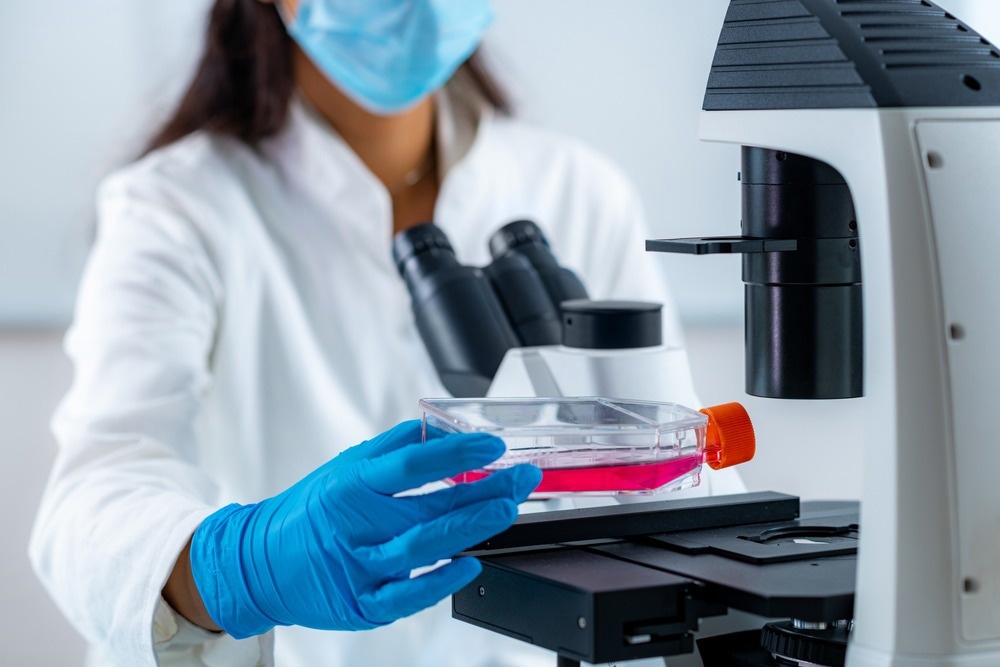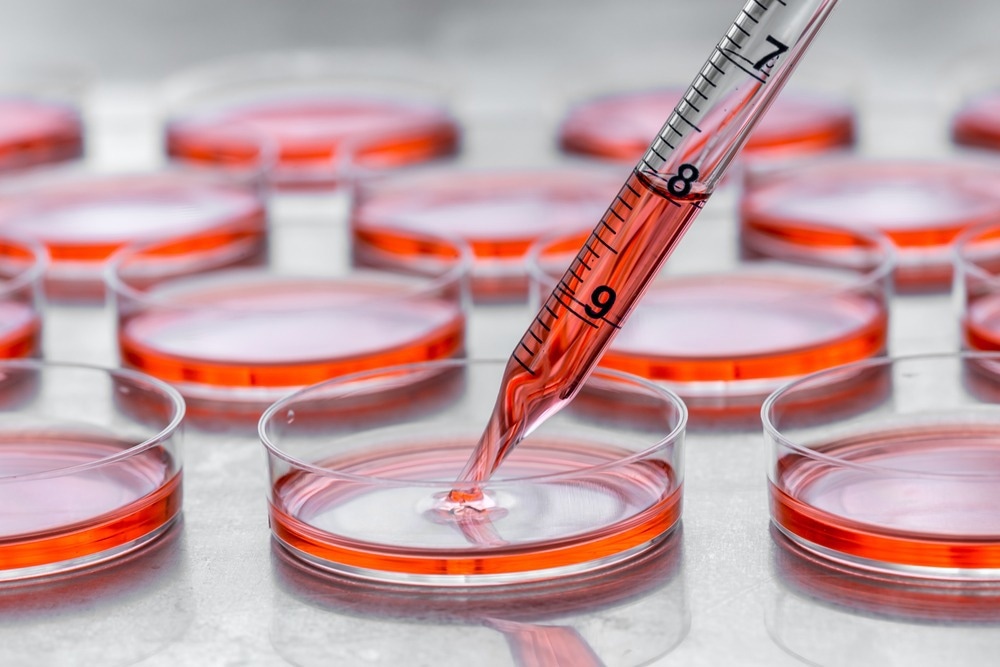Studying the cell requires a model on which one can manipulate, test and experiment. Cell cultures provide this model, assisting in understanding various scientific inquiries and technologies, such as cell growth and normal functioning, growth factors identification, development of vaccines, rRNA technologies, and immunology.

Image Credit: Microgen/Shutterstock.com
The use of cell culture is known as an in vitro technique, whereby an artificial environment is used to grow cells, micro-organisms, tissues, or organs and is accompanied by a culture medium, which has the necessary energy and compounds to allow for growth. It has been most widely used within the pharmaceutical industry, in which the culturing of animal cells has been implemented within research to investigate the cytotoxicity of novel therapies as well as aging, proteins of therapeutic value, toxic compounds, and drug effects at a cellular level, mutations, and cancer.
The Beginnings
Dating back to the early 20th century, the first cell cultures are often attributed to Ross Granville Harrison (1870–1959), wherein 1906 and 1907, two identical papers were published. Harrison described his experiments in these papers using small fragments of neural cell tissue derived from frog embryo, where these small neural crest tissue pieces were bathed in partially coagulated lymph upon a cavity-containing coverslip glass. The cover slip glass, with a drop containing the tissue fragment and coagulate, is then inverted so that the drop is hanging, whereby the hanging drop within the coverslip glass cavity is then observed under a microscope. This culturing technique is known as the 'Hanging Drop Method,' It allowed Harrison to demonstrate nerve fibers forming from neuronal cells, thus proving the neuron doctrine hypothesiS.
It was not until the 1950s that mass production of animal cell culture was implemented; driven by polio epidemics in the 1940' and 1950s and the urgent need for viral vaccines, the necessity of animal cell culture at an industrial scale was clear. And thus, cultured animal cells spawned the polio vaccine's development, making it the first commercial product that arose from cultured animal cells.
Categorizing Cell Cultures
Of cell cultures, there are three types: precursor cell culture, differentiated cell culture, and stem cell culture. With the precursor cell culture, cells are not yet differentiated, though. In contrast, cells of the differentiated cell culture have already differentiated and no longer have the capacity to differentiate further. Lastly, in the stem cell culture, cells are differentiated and can differentiate into any cell type.
Furthermore, cell cultures are known as either primary or secondary, which describes the derivation of the cultures. For example, primary cell cultures are derived from tissues and organs directly through mechanical, chemical, or enzymatic processes.
As primary cell cultures are sub-cultured in a fresh medium over an extensive period, cell lines that result are known as secondary cultures, and thus secondary cell cultures are derived from primary cultures. Secondary cell cultures have found much use in immunology, toxicology, and virology, with their preference over primary cell cultures given the simplicity of growing them and their readily available nature. Secondary cell cultures can be categorized as finite or indefinite, which defines the culture's lifespan. One well-known indefinite cell line - also named "immortal" - is the HeLa cell line, which has been used in scientific research throughout the world's laboratories.

Image Credit: Hakat/Shutterstock.com
The Challenges
Despite being a well-established laboratory method for experimental procedures, challenges still exist in cultured cells.
Reproducibility is a major issue, given that biological variability can exist with each generation of cells, thus contributing to the inconsistencies and failure to reproduce experiments. In addition, environmental condition differences, for example, oxygen levels, can also affect the reproducibility, where researchers may not provide such information, and hence inconsistencies arise. Cell line misidentification, as well as variations in techniques, can also influence reproducibility.
Another issue is contamination, whereby the risk is high given that the cells in the culture are out of the environment where the immune system protects them. Contamination can occur with non-living substances, known as impurities, and also biological entities; bacteria, viruses, fungi, and yeast. The bacteria mycoplasma is one major source of complication given that, alongside viral infection, they are difficult to detect and extremely contagious, as well as due to the hardiness of mycoplasma, as it usually requires more than one antibiotic to treat the bacteria successfully. Cell viability may also be affected due to contamination, whereby contaminants could reduce the proportion of live cells within the culture, thus negatively affecting experiments.
Conclusion
The development and harnessing of cell culturing technologies have contributed much to scientific research since its conception, furthering our understanding of cell biology and diseases and playing a crucial role in the discovery and development of therapeutic drugs. Despite its challenges, it remains one of the most important methods conducted in research laboratories, paving for more future discoveries and scientific success.
Sources:
- Salauddin M. A Brief Concept of Cell Culture: Challenges, Prospects and Applications. Cell Culture - Advanced Technology and Applications in Medical and Life Sciences. 2021.
- Ambrose C. An amended history of tissue culture: Concerning Harrison, Burrows, Mall, and Carrel. Journal of Medical Biography. 2017;27(2):95-102.
- Millet LJ, Gillette MU. Over a century of neuron culture: from the hanging drop to microfluidic devices. Yale Journal of Biology and Medicine. 2012;85(4):501-21.
- Verma A, Verma M, Singh A. Animal tissue culture principles and applications. Animal Biotechnology. 2020;:269-293.
Further Reading
Last Updated: Nov 21, 2022